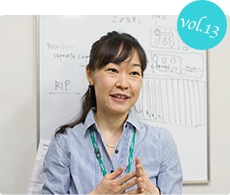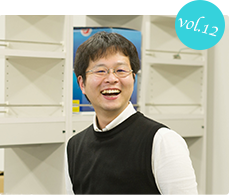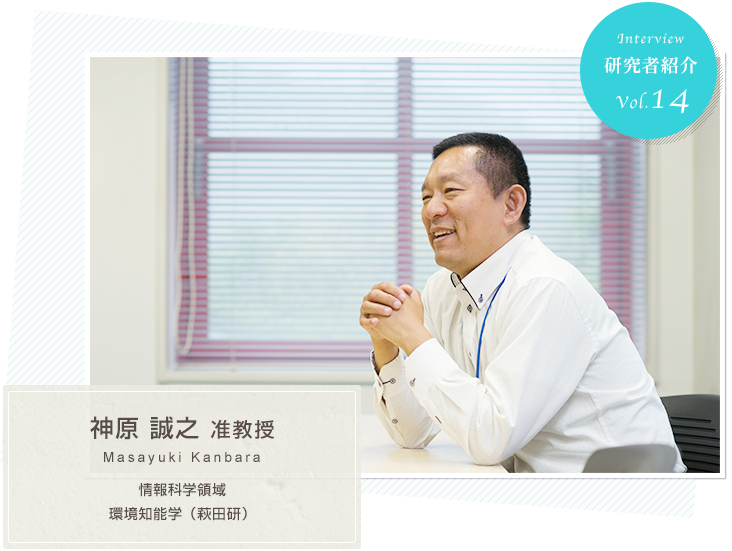
![]()
D. in Engineering from Nara Institute of Science and Technology in 2002. D. in engineering from Nara Institute of Science and Technology in 2002. He became an assistant professor at the Graduate School of Information Science and Technology in the same year, and an associate professor in 2010. His research interests are in the areas of mixed/augmented reality, environmental intelligence, and human-robot interaction.
Path to becoming a researcher
I entered the master's program at TUAT from Okayama University in 1997, and my research, including my time as a graduate student and assistant professor, has focused on how machines and humans can communicate with each other. Many of my research topics were derived from needs in my personal life. For example, an interactive robot called "Dabelaibu" is a robot that can communicate with people who are watching a Hanshin game at home and are happy when Fukudome hits a ball. I thought, "What could be more sad than that? I thought, "What could be more lonely than that? Watching TV alone in a daze is not good for the brain and does not activate it. That is why we are researching the need for a robot that makes people want to talk to it. My research on self-driving is based on my experience of sitting in the passenger seat of a car driven by another person, which is different from the way I think about driving. If you are afraid and anxious, you will not want to be in such a car. How can people and cars share information about when to brake and what route to take? In terms of safety alone, as a robot I can drive a few centimeters away from a wall, but when a human experiences that, it is scary. We need intelligence that allows the car to "drive safely," and we are researching how this can increase human comfort.
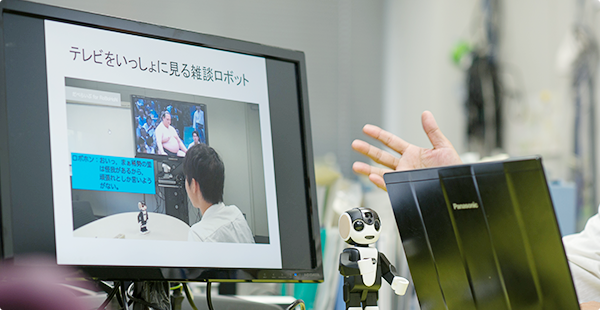
This is the kind of intelligence that makes people think, "This guy is interesting," or "This guy is intelligent," and want to use the robot, or become addicted to it, when they come in contact with it. I always tell my students that they should create what they want to do and what they want to create. I always tell my students to make what they want to make, not what they think they can make.
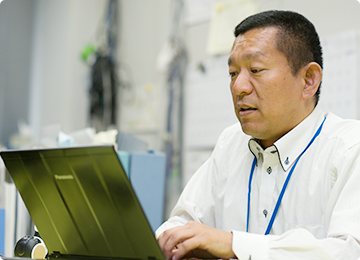
Daily work-life balance
As for my daily routine, on weekdays my children leave the house at 7:30 a.m. to go to elementary school, so I leave the house at that time and come to work. In the evening, I come home around 6:00 or 7:00 and have dinner with my family. Then I work at night or in the morning. I do some housework, like taking out the garbage, but not much else.
My work-life balance depends on whether I have children or not. When I didn't have children, the work was so interesting that I rarely went home. At the time, I did not want to break this lifestyle and did not want to get married or have children. But that was not to be, and I did get married. Getting married did not change my life, but having a child changed it. For the past 12 years, since the birth of my oldest child in 2006, there has been a lot of pressure to get home as soon as possible, and it has become embedded in my DNA, making me fidgety when it gets close to evening. I feel the pressure when I have late night meetings. It was especially difficult when my children were 0, 5, and 6 years old. My wife and I had to raise our children alone because our parents lived far away and we had no one to turn to. I think I might stay at the university and work when the kids are older and my wife says I don't have to come home so early.
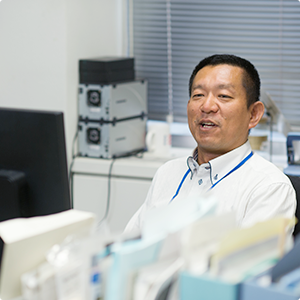

My wife had a hard time when I went on business trips. I did not know that the university had a childcare assistance system for business trips until now. I may not use it now that the children are getting older, but it would have been nice to know about it because it would have been much easier for my wife if I had just taken one of the children with me on my business trips.
Now I don't think it's good to not get married or have children because you don't want to disturb your current situation. I never liked children, but now that I have children of my own, I enjoy raising them. I hope that students will not be averse to eating in different ways.
Different ideas for robotics research
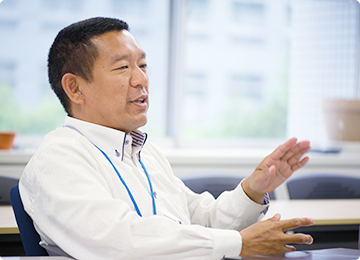
About every two years, female students enroll and graduate from the lab. When I look at them, I think that gender has nothing to do with research. What is important in research is to find what you want to do.
Even if the university wants to increase the number of female students in the future, it is impossible to increase the number of female students if the population is not large enough to begin with. I think there is a problem with the image of the information field in particular. Successful startups like Facebook and Google were all founded by men. But when it comes to finding things to do, there are a lot of ideas that only women can come up with.
One example is the hugging robot. The research involved hugging a large stuffed robot and having it pat you on the back to see how that would change your feelings. Men would not have come up with that idea. I thought it was an interesting study. Another one is a robot that makes you want to punch it. When you hit the robot, it would either say, "Stop," or "It doesn't hurt at all," and we tested how the robot would feel in response to each of those responses. As a result, we found that there are two types of stress relief: sports type and S type. This means that we may need robots that say hateful things like "It doesn't hurt at all" even when we hit them. In this way, I thought that women have ideas for communicating with robots that men cannot come up with. Since the users of robots are not gender-neutral, I think that unless female researchers work on this kind of research, robots that women want will not be created.
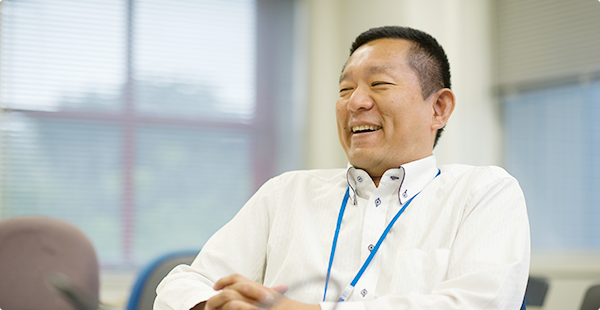
(June, 2018)

-
2018.6 updated
Division of Biological Science
-
2018.6 updated
Division of Biological Science
-
2017.6 updated
Division of Biological Science






